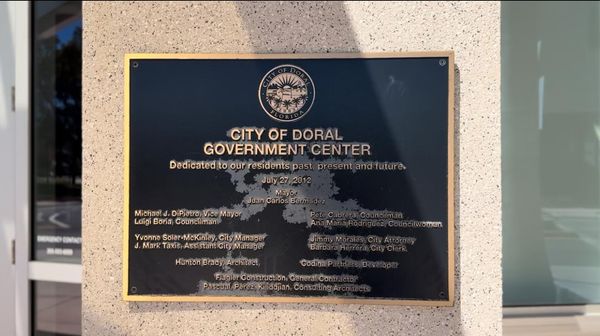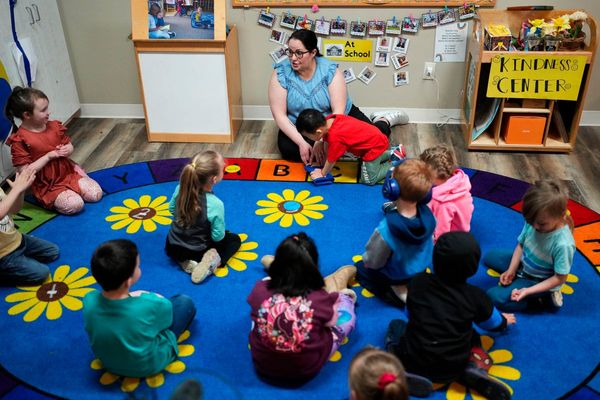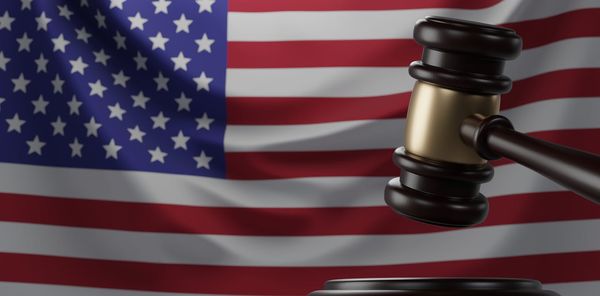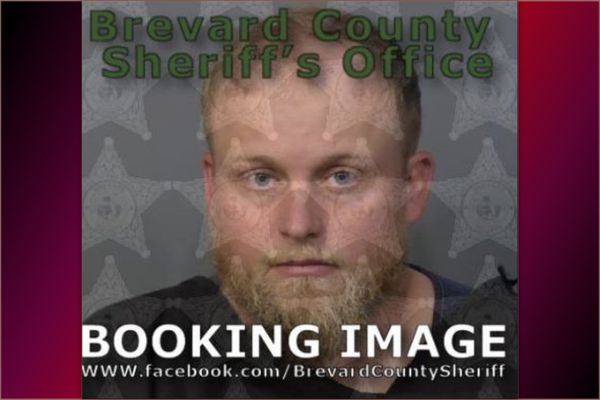
Deep into my nightly TikTok scroll, I stumbled across the world of vintage makeup. I had discovered a video of creator Olivia White (@LivvyLoveASMR) roleplaying as a softly spoken Avon lady selling her wares in a soothing ASMR video, tapping her nails on kitschy old cosmetic bottles shaped like pieces of dollhouse furniture. I was rapt, intrigued by the novelty packaging that stood in stark contrast to the sort of staid, samey makeup products that populate shelves today. “When I first started making these videos I had no idea people would like them so much,” says White, 27. “I think there’s an element of nostalgia to it all. A lot of people leave comments saying my videos remind them of their grandmothers. It makes my heart so full to read that.” White herself inherited most of her collection from her own grandmother and great-grandmother, who were both Avon sales representatives in the 1960s and 1970s.
A love of history is also what keeps Lisa Larsson, 61, hooked on collecting vintage cosmetics. In 1975, when she was 12, a family friend gifted her a 1930s minaudière – a small, beautifully decorated case divided into storage compartments. “It was a double-sided gilt brass case with a metal mesh strap handle, decorated with green faux-shagreen enamel,” she recalls. “The interior on one side had a bevelled mirror, a small plastic comb and compartments for powder and rouge. The other side had clips for a matchbook and stamps, a section for cigarettes, and a small compartment for hairpins. I loved it.”
Unsurprisingly, Larsson was heartbroken when she accidentally dropped it while moving house in 2001, shattering the mirror inside. “I thought: ‘What am I going to do? How am I ever going to find a replacement mirror?’” she recalls. But just a few months later, the former archeologist and history buff was at an antiques market in London when she stumbled across the same minaudière in pristine condition. “It was exactly the same, with a mirror in it,” she says.
Thrilled with her new discovery, Larsson began to wonder what other vintage cosmetics and accessories could be out there. “I thought if I had found this one, maybe I could find another one? Or a different one? There was no looking back after that.” Larsson’s burgeoning interest in antique makeup was accelerated by the advent of the internet and, subsequently, online reselling platforms. “I would spend my spare time browsing eBay to see what was out there,” she says.
Larsson estimates she has now collected “thousands” of vintage powder compacts and has become an active member of the British Compact Collectors Society. “The bulk of my collection is from the art deco period,” she says. She’s particularly interested in compacts made during wartime. “They couldn’t make them out of metal during the war because there wasn’t so much metal available, so they had to come up with different ways of making them,” she explains. Many were made of Bakelite instead. “Then, after the war, when women wanted to have a bit of luxury in their lives again, compacts really took off and became bigger and fancier and flashier.”
Xabier Celaya, 39, has always been interested in beauty. He currently works as a makeup artist, but one of his first jobs was as an assistant at Charles Fox, a company that supplied makeup to theatres and film and TV studios in Covent Garden. One day, he was organising the stockroom when he came across a dusty old box of theatrical makeup from the 1920s. “It was full of all the original grease-paint sticks, powder puffs, old rouge powders,” he says. He was instantly fascinated. “I thought: ‘Wow, this was someone’s kit and it’s survived all this time.’”
Chuffed with his find, Celaya made a display space for it in the front of the shop. “I think my colleagues thought I was a bit crazy,” he laughs. All bar one, at least. “One gentleman – Fred Raistrick, who’d worked at Charles Fox since the 1960s and served the likes of Elizabeth Taylor, Cyd Charisse, Judi Dench – really encouraged me to make this display. That definitely set things in motion for me.”
Mesmerised by the decaying cosmetics and emboldened by Raistrick’s support, Celaya developed a fierce passion for makeup history. “Whenever I travelled, I’d look for the first antiques market and see what I could find,” he says. He was thrilled when he found a 100-year-old lipstick; ecstatic with a battered old Vaseline tin. “It was still just a little metal tin with some petroleum jelly in it. Nothing has changed. It got me thinking about how sometimes the greatest designs are so simple.”
Today, Celaya is in possession of a vast collection of vintage cosmetics, mostly from the period between the 1880s and the 1990s. He owns some older pieces, too, including a perfume bottle from Judea dating back to the reign of King Herod. “I like the quirky items,” he says. “I have a purple eyebrow crayon from the mid-1910s. You never really think of women in that era walking around with purple eyebrows, but the evidence is right there.”
Celaya is interest in vintage beauty may be niche, but he’s certainly not alone in his passion for bygone cosmetics. Resale platforms such as Etsy and eBay are awash with novelty Avon perfume bottles, 1920s compacts and mouldering rouge, and collectors are often willing to pay serious money to get their hands on rare finds. In May this year, one eBay seller parted with a pot of Max Factor’s historic Pan-Cake foundation for $180 (£141), while at the time of writing, 81 people are interested in an extensive Mary Quant makeup collection dating back to the 1960s and 1970s, priced at a cool £1,500.
For Celaya, it’s “hard to say” how much he has spent on his collection. “Maybe I don’t want to admit it to myself,” he suggests, laughing. But he reckons the most expensive item is a tube of brilliantine released as part of a hair product collection produced by Josephine Baker in the 1920s. “That was definitely on the higher end.”
Anita Bhagwandas, 41, a beauty journalist and the author of Ugly, is a fellow vintage beauty obsessive who began collecting old products in her teens. “I’ve always been a part of the vintage scene,” she says, explaining that she was initially interested in vintage fashion from the 1930s and 1940s. “I think alongside that came an appreciation for vintage beauty products,” she says. One of her favourite pieces is an art deco Bourjois perfume bottle shaped like an owl, which she inherited from her grandmother. “The bottle was always there in our house in India and I really loved it,” she recalls, explaining that she remains captivated by how “magical” so many old products seem.
Today, she has amassed a collection comprising a variety of different products from different periods, with the oldest items dating back to the Victorian era. “It’s mainly perfume bottles and makeup, and mini beauty kits and vanity cases, too,” she says. “They’re just so beautifully designed. You get a real sense of joy from collecting them, and even just from looking at them.”
While it’s safe to say most of us have likely never shelled out significant sums to buy empty perfume bottles and unusable lipsticks, it is easy to see how collectors can become captivated by vintage makeup. The ritual of applying makeup is intrinsically linked to human civilisation, society and culture: humans have used cosmetics for more than 7,000 years, ever since Ancient Egyptians first began lining their eyes with kohl.
On social media platforms such as YouTube and TikTok, videos showcasing of creators’ old cosmetics collections are immensely popular, regularly racking up millions of views. Makeup artist and author Lisa Eldridge has built a dedicated 2m strong following by talking viewers through her extensive collection, which includes a lipstick holder once owned by Audrey Hepburn and a 1,000-year-old Chinese powder compact.
Celaya also periodically shares photos of his collection on his Instagram account @LondonCosmeticsMuseum. His collection features a 1920s “cosmetic stove”, a small device used to “bead” eyelashes to make them appear darker and fuller; a 1970s Boots mascara with the 14p price tag still attached; and Overton’s “high-brown” face powder, one of the first mainstream cosmetic products created specifically for Black women in the 1940s.
Celaya is interested in how social history can reveal itself through these old, mundane cosmetic products. “It’s a positive there were products made for darker skin, for example,” he says. But he notes that the racist prejudices of the era still come through. “They were still ultimately designed to lighten the skin.” Celaya sends me a photo of some of the products in question: though designed for Black and Asian women, the illustrations on the packaging seem to exclusively feature faces with lighter skin. “You can learn a lot about history – good and bad – through makeup.”
I’m curious: does anyone attempt to use this ancient makeup? While Larsson hasn’t used any of her old compacts, she has known people to do so. “When I did vintage fairs, I used to sell compacts, complete with a cache of original powder, to people who were interested in trying it out,” she recalls. “I think using powder should be absolutely fine.”
White hasn’t used any old cosmetics on herself, but she has opened up some of her collection for videos. “They can smell very strong – almost foul, even,” she says, wincing. “Aside from the occasional perfume that might have been kept in really good condition, pretty much everything is unusable. I once went to an antiques store where an old perfume bottle had smashed inside and the smell was unbearable.”
After all, would it even be safe to use these antiquated cosmetics? “They can carry loads of bacteria,” Bhagwandas warns. “So sometimes I’ll clean out a vintage compact or pillbox and refill them with my own products. It can be quite a faff, but then when I look at my makeup bag it brings me so much joy. It’s like having a bag full of treasure.”
Many collectors sorely miss the refillable element of makeup products from the early 20th century. By contrast, today 77% of all beauty packaging ends up in landfill and, according to global environmental organisation Zero Waste, more than 120bn units of packaging are produced every year by the beauty industry. “I hate that everything today is plastic and disposable,” Larsson says. She explains that older, metal compacts were more “substantial” and it was common for women to refill them. White feels similarly. “All the packaging was so creative,” she says. “Today, products are plain and designed to be thrown away after they’re used. But I love that many of the perfume and cologne bottles of the 1960s and 1970s were designed to be cleaned out and reused, or even be repurposed as decorations.”
Celaya adds that he misses the “simplicity” of the way people approached beauty in the first half of the 20th century, before hyperconsumption went into overdrive. “Women would own one lipstick, one powder,” he says. “It wasn’t until the 80s that people started having a lot more stuff.” On a similar note, Bhagwandas says she yearns for the days when beauty was more about enjoying the process of using cosmetics, in the years before social media, the plastic surgery boom, and the age of the “Instagram Face”. “Beauty in the past almost felt quite ritualistic, rather than results-driven and aesthetic-focused,” she explains. “Today it’s all about how many layers of skin you can conceal and how glowy you can make yourself look, whereas I think back then it was more of an act of self-care.”
But Celaya also flags that it’s possible we could be looking at the past through rose-tinted glasses. “We see it through the lens of now. We romanticise how it used to be,” he says, explaining that the beauty industry as a whole has definitely improved over time. “The variety of skin tone shades available in the past compared to now is like night and day, for example.” He stresses that we’re also lucky to live in an age where “consumer awareness” is prioritised and ingredients such as radium are no longer found in face creams and toothpaste. “Now we have regulations in terms of ingredients and advertising claims, and that’s definitely for the better.”
While it may seem shocking to us in 2024 that anyone ever willingly rubbed a radioactive substance on their face, Celaya says he is reluctant to judge past generations. “I try to look at all this with an open mind. Sometimes I wonder, in 100 years’ time, how people will look at the makeup of today,” he says. “Will they romanticise it? Or be horrified? Maybe they’ll look at contour palettes and wonder: ‘What were they thinking?’”







